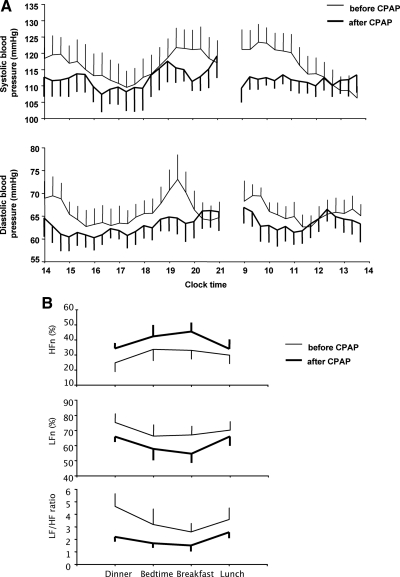Fig. 3.
A, Mean (± sem) daytime (from 1400–2100 and from 0900–1400) profiles of systolic and diastolic blood pressure before and after 8 wk of CPAP treatment. The profiles are illustrated as smoothed data using a three-point moving average (i.e. a window width of 1 h). Mean daytime diastolic blood pressure decreased on average by 2.3 mm Hg after CPAP, whereas there was no significant change in mean daytime systolic blood pressure. B, Mean (± sem) daytime profiles of cardiac autonomic activity derived from HRV analysis of ECG recordings that were obtained during the hour preceding each meal (dinner, breakfast, and lunch) and before bedtime (between 2130 and 2200 h) during the 24-h blood sampling period. HFn is the normalized spectral power in the HF (0.15–0.40 Hz; used as a marker of vagal activity), and LFn is the normalized spectral power in the LF (0.04–0.14 Hz; used as a marker of sympathetic activity). LF to HF ratio (LF/HF; a marker of cardiac sympathovagal balance) was 44% lower after CPAP treatment, reflecting a shift toward lower sympathetic and higher parasympathetic activity.

